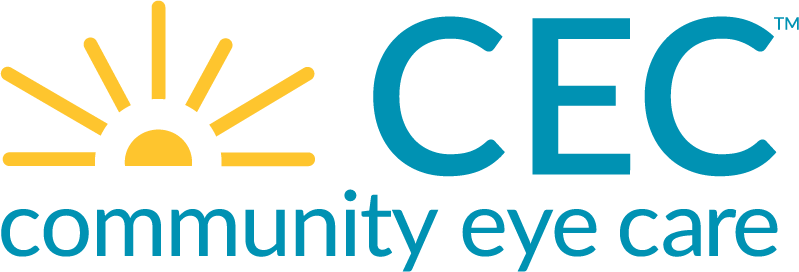
Cataracts Explained
Cataracts are a prevalent condition, especially among the aging population. Essentially, a cataract is the clouding of the lens in the eye, which leads to a decrease in vision. This occurs when proteins in the lens begin to clump together, forming cloudy areas that obstruct light from passing through the lens clearly.
As cataracts progress, they can significantly impair vision, making everyday tasks difficult. Common symptoms include blurred vision, difficulty with glare (especially at night), fading of colors, and double vision in one eye. Although cataracts can develop at any age, they are most associated with aging and tend to worsen over time.
Who's at Risk for Cataracts?
Recognizing the risk factors for cataracts is vital in understanding who is more likely to develop this condition and why. Here are the primary risk factors:
- Age: Aging is the most significant risk factor for cataracts. Most cataracts are age-related, typically forming after the age of 40 and becoming more pronounced after 60.
- Genetics: Family history plays a significant role in cataract development. Individuals with a family history of cataracts are more likely to develop them.
- Ultraviolet (UV) Radiation: Prolonged exposure to UV rays from the sun can damage the eyes and increase the risk of cataracts. Wearing sunglasses that block UV rays can mitigate this risk.
- Medical Conditions: Conditions such as diabetes, hypertension, and obesity are linked to a higher risk of cataracts. Effective management of these conditions is crucial in reducing the risk.
- Lifestyle Choices: Smoking and excessive alcohol consumption are associated with an increased risk of cataracts. Quitting smoking and moderating alcohol intake can help protect eye health.
- Medications: Long-term use of certain medications, such as corticosteroids, can contribute to cataract formation. It is important to discuss potential side effects with healthcare providers.
Understanding these risk factors allows individuals to take preventive measures and make informed decisions about their eye health.
Treatment for Cataracts
Fortunately, effective treatment options are available for those diagnosed with cataracts, most notably cataract surgery. Here’s a detailed look at the treatment process:
- Surgery: Cataract surgery is the most effective treatment for cataracts. During the procedure, the cloudy lens is removed and replaced with an artificial lens called an intraocular lens (IOL). Cataract surgery is typically performed on an outpatient basis, meaning patients can go home the same day. It is one of the safest and most common surgical procedures, with a high success rate and minimal downtime.
- Non-Surgical Options: In the early stages of cataract development, vision can often be improved with new prescription glasses, magnifying lenses, or better lighting. These measures are temporary and do not halt the progression of cataracts, but they can help manage symptoms until surgery becomes necessary.
- Recovery: After cataract surgery, most patients experience significant improvement in their vision. It is crucial to follow post-operative care instructions provided by the ophthalmologist to ensure optimal recovery and avoid complications.
By exploring these treatment options, individuals can make informed decisions about their eye care and seek timely medical intervention when necessary.
Tips for Keeping Your Vision Crystal Clear
While some risk factors for cataracts, such as age and genetics, cannot be controlled, several lifestyle choices can help prevent or delay the onset of cataracts. Here are some practical tips for maintaining healthy vision:
- Wear UV-Protective Sunglasses: Protect your eyes from harmful UV rays by wearing sunglasses that block 100% of UVA and UVB radiation. A wide-brimmed hat can also offer additional protection.
- Eat a Nutritious Diet: Consuming a diet rich in fruits and vegetables, especially those high in antioxidants like vitamins C and E, supports eye health. Leafy greens, carrots, and citrus fruits are excellent dietary choices.
- Quit Smoking: Smoking increases the risk of cataracts and other serious eye conditions. Quitting smoking improves overall health and reduces the risk of cataract development.
- Manage Health Conditions: Effective management of health conditions such as diabetes and hypertension is crucial in preventing cataracts. Regular check-ups and medication adherence play a key role.
- Regular Eye Exams: Routine eye exams are essential for early detection of cataracts and other eye conditions. Discuss with your eye doctor how often you should have your eyes checked based on your age and health status.
- Limit Alcohol Consumption: Moderating alcohol intake can help lower the risk of developing cataracts. Adhering to guidelines for safe alcohol consumption is beneficial for overall health.
- Use Protective Eyewear: Wearing protective eyewear when engaging in activities that pose a risk to the eyes can prevent injuries that could lead to cataracts.
By incorporating these preventive measures into daily life, you can significantly reduce your risk of developing cataracts and maintain healthy, clear vision.
Information received through CEC vision care channels is for informational purposes only and does not constitute medical advice, medical recommendations, diagnosis, or treatment. Always seek the advice of your eye doctor, physician, or another qualified health provider with any questions you may have regarding a medical condition.
CEC is a wholly-owned subsidiary of VSP Vision.
Sources: American Optometric Association (AOA), American Academy of Ophthalmology (AAO), The Vision Council (TVC), National Eye Institute (NEI), and Centers for Disease Control and Prevention (CDC).
Back to All

